Earthworks Design
The site was assessed and observed over the course of nearly a year to accurately determine where rainwater runoff was most available and what locations were suitable for locating water harvesting earthworks.
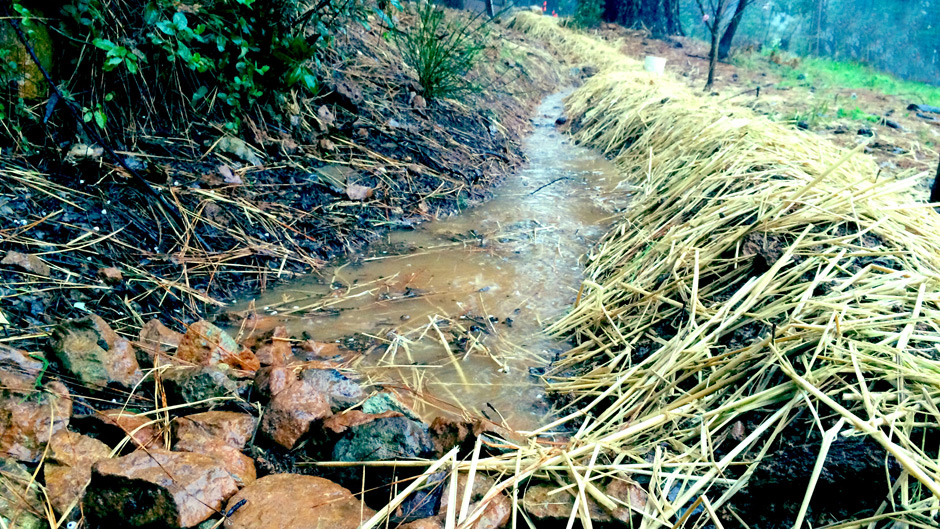
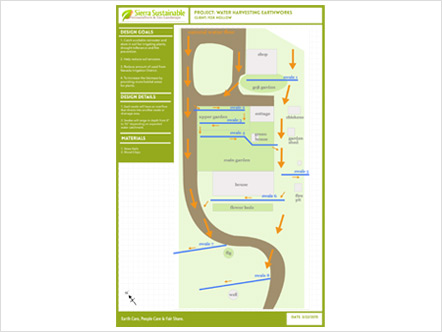
The site was assessed and observed over the course of nearly a year to accurately determine where rainwater runoff was most available and what locations were suitable for locating water harvesting earthworks.
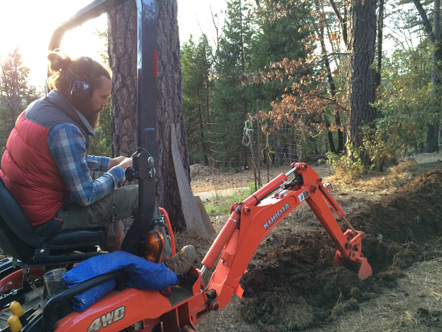
Swales and diversion channels were dug with either a sub compact back-hoe or by hand depending on the scenario.
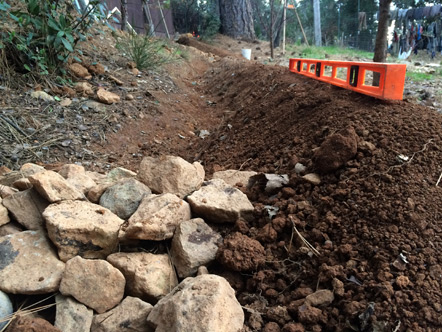
After a rough dig the earthworks were checked to ensure they are level and on contour as this will ensure the swale is sinking the most water it can into the soil.

Diversion channels were created to direct water in-between each of the water harvesting swales and lined with rock sourced on the property to slow the water and reduce erosion.
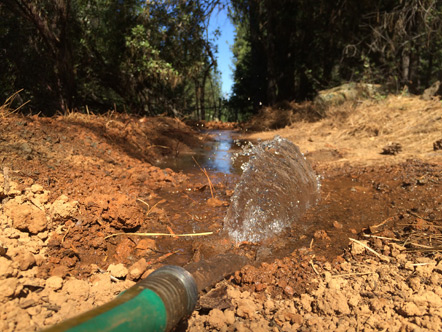
Swales were tested with water to ensure they flowed as expected and no leaks were present. Note that all swales were designed to hold a significant more amount of water than a garden hose can produce.
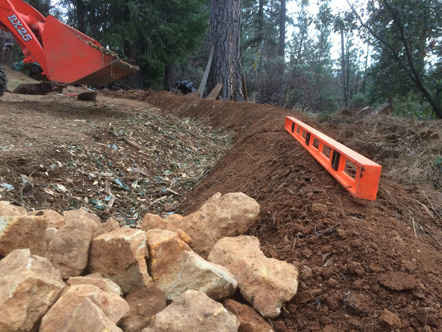
Directly after construction each swale was planted with hairy vetch to build the soil nutrients and help hold the earthwork in place. Mulch was placed in the basin and on the brim to help keep moisture in and prevent erosion before the plants took hold.
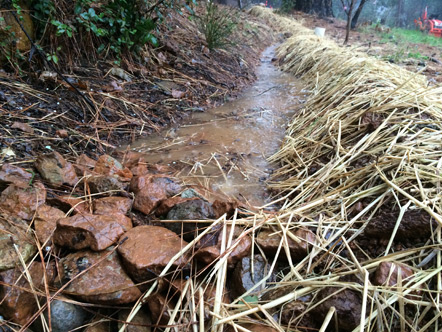
This is a shot of two 80′ swales connected via a diversion channel with another diversion channel as an overflow to a third swale below (not pictured). Their first rain was an impressive 4″ storm with more than enough room and capacity to store and soak more water into the soil.

Pictured is the lowest swale on the property and therefore the largest. The 4″ rain storm dropped 500,000 gallons of water on this property and all of the swales preformed as expected.
Currently this is an ongoing project with 5 of 9 swales in place. They have seen several rainstorms and the largest did not come close to being over capacity for the swales.
Below several there are now wet spots surfacing on the soil weeks after no rain – showing soil saturation and water storage in the soil.